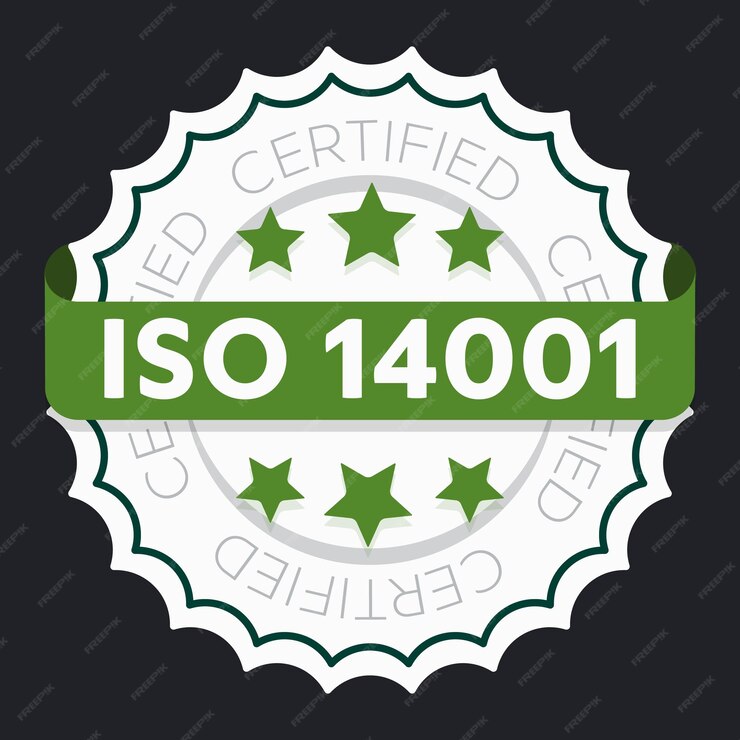Mastering ISO 14001
I. Introduction
A. What is ISO 14001?
ISO 14001 is an internationally recognized standard for Environmental Management Systems (EMS). Its primary purpose is to provide organizations with a structured framework to minimize their environmental impact while ensuring compliance with regulatory requirements. Essentially, ISO 14001 allows businesses to systematically manage their environmental responsibilities, making their operations more sustainable and efficient.
B. Importance of ISO 14001 in Modern Business
Implementing ISO 14001 offers numerous tangible and intangible benefits to businesses. Key advantages include:
- Enhanced Environmental Performance: The standard helps organizations identify and manage environmental risks, leading to more sustainable practices and a reduced environmental footprint.
- Operational Efficiency: ISO 14001 encourages better environmental practices, resulting in cost savings from lower energy consumption, more effective waste management, and optimized resource use.
- Increased Market Competitiveness: Certification demonstrates a company’s commitment to environmental stewardship, appealing to customers, partners, and stakeholders who value sustainability.
- Regulatory Compliance: The framework helps organizations stay compliant with environmental laws, reducing the risk of fines, penalties, or legal issues.
II. Understanding ISO 14001
A. Definition and Scope
ISO 14001 specifies the requirements for an effective Environmental Management System (EMS), designed to help organizations systematically manage and improve their environmental performance. It’s part of the ISO 14000 family, which addresses various aspects of environmental management.
B. Key Requirements and Clauses
ISO 14001 is structured around several critical clauses, each focusing on a specific aspect of environmental management:
- Context of the Organization: Organizations must understand internal and external factors that could influence their environmental management. This involves identifying stakeholders, their needs, and the scope of the EMS, enabling businesses to tailor their policies and objectives to relevant environmental issues.
- Leadership and Commitment: Top management plays a crucial role in implementing ISO 14001. Leaders are responsible for setting environmental objectives, integrating the EMS into the overall strategy, and ensuring resource allocation for environmental goals.
- Planning and Risk Management: Effective planning is necessary to achieve environmental objectives. This includes identifying environmental risks, setting targets, and developing plans to mitigate those risks.
- Support and Operation: This clause focuses on providing resources, training, and effective communication throughout the organization to implement the EMS. Staff must be competent and aware of their roles in maintaining the EMS.
- Performance Evaluation: Organizations need to monitor and measure their environmental performance, conduct internal audits, and review results regularly to ensure that the EMS functions as intended.
- Improvement: Continuous improvement is at the heart of ISO 14001. Organizations must address non-conformities, implement corrective actions, and enhance the EMS to improve their environmental performance continually.
III. Why ISO 14001 Training is Essential
A. Enhancing Environmental Performance
ISO 14001 training helps improve an organization’s environmental practices by providing employees with the necessary knowledge to identify environmental risks and implement sustainable management strategies. Here’s how:
- Understanding Environmental Aspects and Impacts: Employees learn to recognize the environmental aspects and impacts of their work, allowing them to reduce waste, conserve resources, and minimize harm.
- Effective EMS Implementation: Training ensures that staff can apply ISO 14001 principles in daily operations, from setting environmental objectives to monitoring performance.
- Encouraging Innovation: With the knowledge gained from training, employees can innovate and develop new solutions to environmental challenges, contributing to the organization’s sustainability goals.
B. Compliance with Regulations
ISO 14001 training ensures employees understand legal requirements, stay informed on regulatory changes, and maintain compliance:
- Understanding Legal Requirements: Employees learn to navigate complex environmental regulations and keep the company compliant.
- Staying Up-to-Date: Training programs include updates on new or revised regulations, ensuring the organization stays aligned with current laws.
- Implementing Compliance Measures: Staff are trained to implement compliance strategies, maintain accurate records, and prepare for regulatory inspections, reducing the risk of non-conformities.
IV. Common Challenges in ISO 14001 Training
A. Navigating Complex Requirements
ISO 14001’s complexity can be daunting for organizations new to environmental management. Common challenges include:
- Technical Language: ISO 14001 uses specific terms that may be unfamiliar to employees.
- Risk-Based Thinking: The standard requires identifying risks, which demands a thorough understanding of both environmental impacts and operations.
- Legal Compliance: Balancing iso 14001 eğitimi requirements with local and international laws can be overwhelming, especially for businesses in heavily regulated industries.
B. Adapting to Changing Regulations
Environmental laws frequently change, and businesses must stay updated. Common difficulties include:
- Frequent Updates: Keeping up with regulatory changes requires time and resources.
- Global Variation: Operating in multiple regions introduces complexity due to different regulatory standards.
- Limited Resources: Smaller organizations may struggle to allocate the necessary resources to track and adapt to regulatory changes.
V. Benefits of ISO 14001 Training
A. Improved Environmental Management and Compliance
ISO 14001 training provides organizations with tools and knowledge to improve environmental management. Key benefits include:
- Better Environmental Performance: Training ensures employees understand core environmental practices, leading to resource efficiency and waste reduction.
- Regulatory Compliance: Training helps organizations stay compliant with environmental laws, avoiding penalties.
- Continuous Improvement: Staff can identify areas for improvement and implement strategies to reduce environmental impact.
B. Enhanced Employee Competence and Engagement
ISO 14001 training fosters both competence and commitment among employees:
- Increased Knowledge: Staff gain the skills to identify risks and implement sustainable practices.
- Greater Engagement: Employees feel more invested in the company’s environmental objectives, fostering a collaborative culture.
- Empowerment: Training empowers employees to contribute to innovative solutions for environmental challenges.
VI. Conclusion
A. Recap of the Importance of ISO 14001 Training
ISO 14001 training plays a critical role in equipping businesses with the knowledge and skills required to effectively manage their environmental impact. It enables organizations to meet regulatory requirements, reduce waste, and improve resource efficiency. Through comprehensive training, employees gain the competence to maintain compliance, contribute to environmental goals, and foster a culture of sustainability.
B. Final Thoughts on Effective Training Programs
For ISO 14001 training to be truly effective, it must be tailored to the specific needs of the organization and its industry. Training should not only cover the technical requirements of the standard but also engage employees at all levels, from management to operational staff. Best practices include ongoing education, hands-on training, and the integration of ISO 14001 principles into existing business processes.



